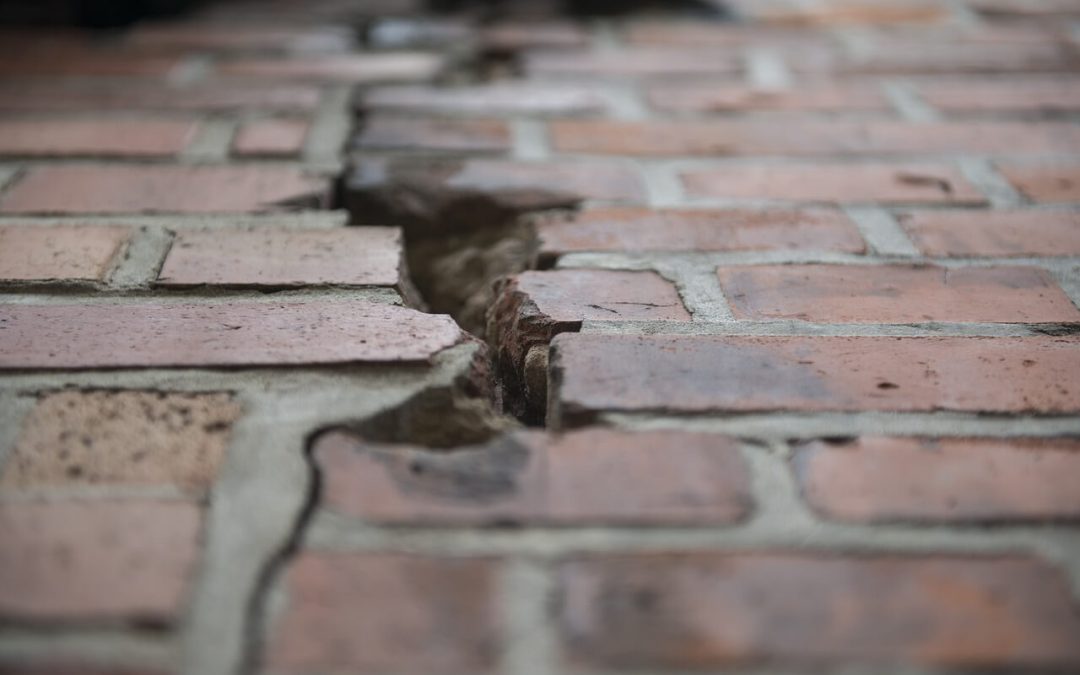Owning a home is a source of pride and joy but comes with responsibilities. As a homeowner, it’s essential to recognize the early signs of structural problems within your property. Neglecting structural issues may result in costly repairs and potentially harmful living conditions.
5 Common Indicators of Structural Damage
Cracks in Walls and Foundations May Be Signs of Structural Problems
Cracks thicker than a quarter-inch may signify that your home is experiencing uneven settling or shifts in the foundation. Look out for diagonal cracks from the corners of windows and doors, which can point to a more serious issue.
Sagging Floors and Roofs
Sagging or bowing floors may be a symptom of weak or compromised structural elements underneath, while a sagging roof could signal deteriorated roof trusses or supports. Both scenarios require a structural engineer’s attention to determine the damage’s extent and severity.
Signs of Structural Problems: Doors and Windows That Won’t Close
If you begin to struggle with doors and windows sticking or failing to close, your home may be experiencing foundation shifts and wall movement. Changes in alignment, while subtle at first, could escalate if left unchecked.
Gaps Between Walls, Floors, and Ceilings
New or widening gaps where walls meet floors or ceilings could indicate that sections of your home are pulling away from one another due to shifting or settling.
Water Damage or Leaks
Persistent moisture problems can cause the deterioration of wood and other building materials, compromising your home’s structural integrity. Investigate evidence of water damage and recurring leaks to locate areas needing repairs and prevent further damage.
Call a Professional About Signs of Structural Problems
Structural issues are serious and often require the diagnosis and expertise of a professional. If you encounter any of the signs mentioned above, engage the services of a certified structural engineer. They will provide a detailed assessment of the problem and guide you through your options for corrective measures.
Attempting to address these concerns with DIY solutions could inadvertently exacerbate the issue, leading to greater damage and higher costs. Always prioritize safety and the long-term well-being of your home by consulting a professional.
The Importance of Inspections
Preventative maintenance is key. Annual home inspections catch structural issues early before they worsen. Home maintenance checks, including a review of your home’s foundation, support beams, joists, and roof structure, are invaluable, contributing to the longevity of your home and the safety of its occupants.
Early detection is the most effective way to minimize damage and preserve the structural integrity of a home. Addressing structural concerns saves you money and provides peace of mind that your property is safe and sound.
FAQs
Are there exterior signs, aside from cracks, that homeowners may notice as potential indicators of structural problems?
Yes, aside from cracks, look for bulging or leaning of walls, separation of exterior siding or bricks, unevenness or sloping in the roofline, and gaps between the exterior walls and the foundation. Deteriorating or crumbling masonry, particularly around the foundation or chimney, and noticeable settlement or sinking of the ground around the home can also indicate structural issues.
What role does the age of a property play in the likelihood of encountering structural issues?
An older home has an increased likelihood of structural issues. Older properties are more susceptible to problems due to wear and tear over time, outdated building materials or construction methods, and lack of maintenance or repairs.
Can unusual odors in a home be linked to underlying structural problems, and if so, what are some examples of these odors?
Yes, unpleasant smells can sometimes indicate structural concerns. For example, musty or damp odors could signify the presence of moisture or water infiltration, which can lead to rotting components such as wood framing or drywall. Similarly, foul sewage-like odors may signal plumbing leaks or sewer line issues that can cause water damage and compromise the integrity of the home’s foundation or structural supports.
How do climate and weather conditions impact the likelihood of structural damage, and what measures can homeowners take to protect their homes?
Extreme temperature fluctuations, high humidity levels, heavy rainfall, snow accumulation, and strong winds can contribute to structural problems. Weather conditions can lead to foundation settlement, moisture infiltration, roof damage, and deterioration of building materials.
Homeowners can ensure proper drainage around the foundation, maintain gutters and downspouts, seal cracks or gaps in exterior walls and foundations, reinforce roof supports and trusses, and install storm-resistant windows and doors. Regular maintenance and inspections are also essential to identify and address any weather-related damage promptly.
Can pests or insects within a home cause structural weaknesses?
Yes. Pests such as termites, carpenter ants, and wood-boring beetles feed on wood and other structural materials, causing damage to load-bearing elements such as beams, joists, and framing. Signs of a pest infestation may include sawdust-like frass, hollow-sounding wood, mud tubes along foundation walls, or the presence of live insects.
Mich-Inspect provides professional home inspection services to customers in central Michigan. Contact us to schedule an appointment.

